ERFORMANCE AT APRICE


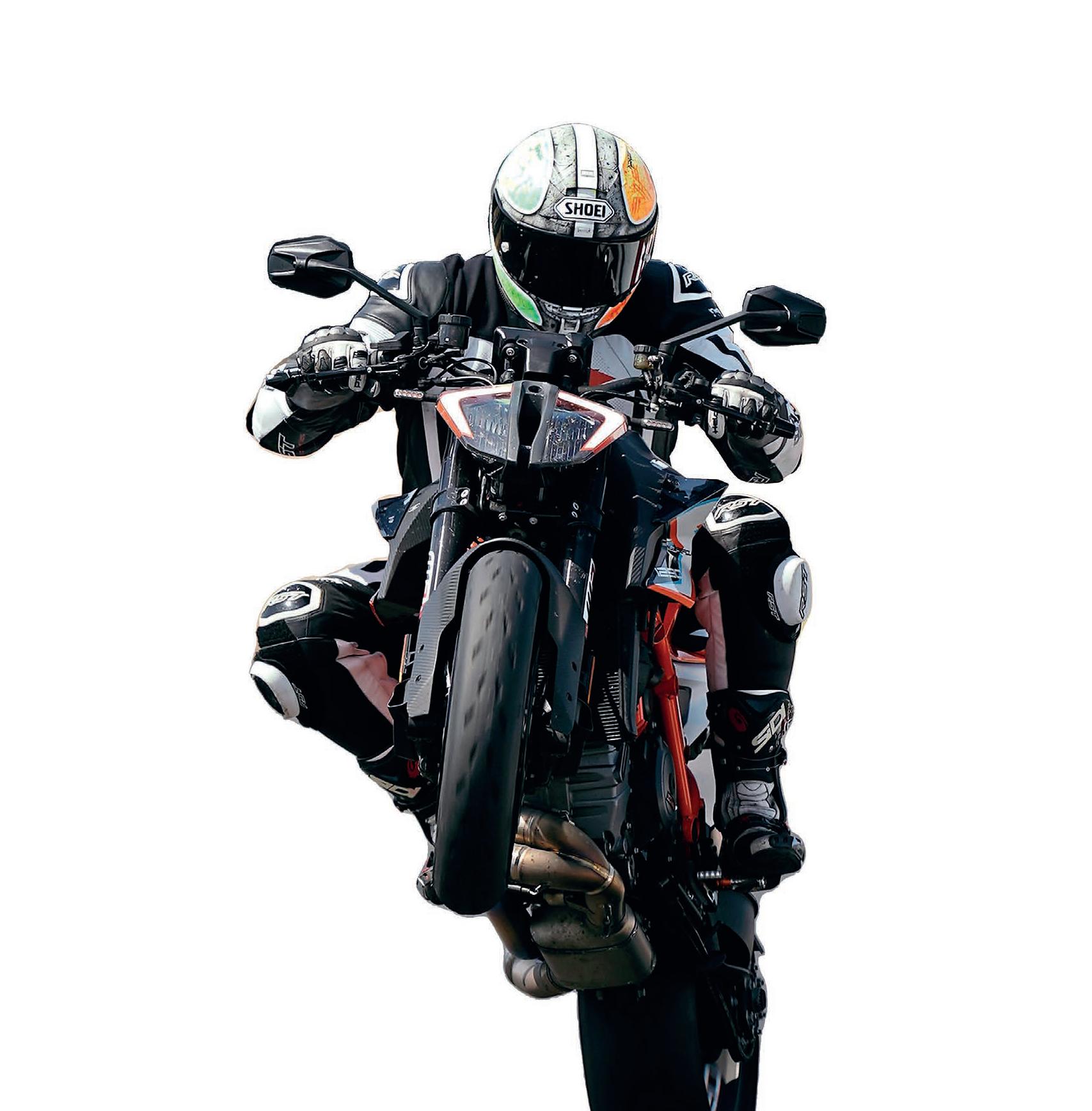



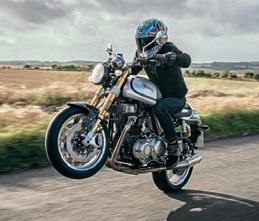
















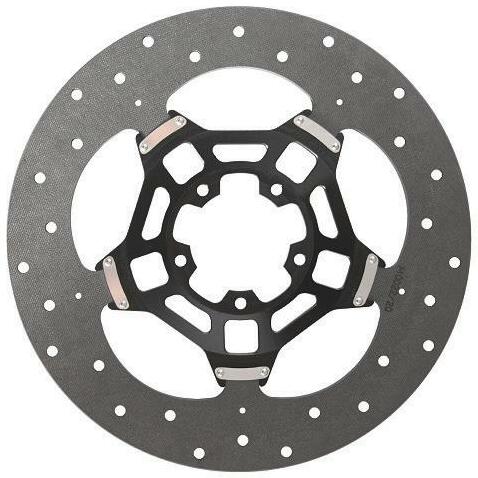


































COLUMNISTS
Parrish
have come and gone,
his
FEATURES
here’s how they made
star and road racer Jeremy McWilliams


about his time developing
Super Duke

by Cadwell Park to do a few
the
world champion
him for
the
Toprak

ISSUE 398 DECEMBER 2022 32 BUY GEAR FASTBIKESMAG.COM Topre-orderyournext issueofFastBikes,headto classicmagazines.co.uk/pre-orderAlternatively,scantheQRcodeonthispageandorder yournextcopytoday.Wewillsenditdirectlytoyou! THE KNOWLEDGE Used Bike Guide .............................. 54 Suzuki’s awesome GSX-R750 might no longer be in production, but there are plenty of used options around to scoop up Here’s what you need to know about them. YOUR LIFE ON BIKES You and Yours ................................. 88 All of your adventures. Chatter ........................................... 90 A page dedicated to the best readers in the world… TESTS Beautiful beast................................ 18 What happens when you take a Super Duke R and make it lighter, faster, and sharper? You create an absolute weapon… and you call it an RR. Performance at a price ................... 32 If you own a Yamaha and want to make it faster, you’ll probably want to check out the brand’s GYTR tuning range Better still, check out the ready-kitted GYTR bikes, like Timmy did. Back to the beginning ................... 60 Remember when MotoGP went four-stroke and Suzuki unveiled the GSV-R? Well, don’t worry if not, because we’re going to remind you all about it. Going Commando ........................... 70 Not everyone wants to go naked, but Norton does So much so that it’s released two new Commandos
Christian Iddon .............................. 94 Racing’s not always easy or glamorous, as Iddon reminds us this month. Tom Neave ..................................... 96 It’s final round time for Tom and he’s buzzing Steve Parrish 98 Goodwood may
but
certainly left
mark.
And
it ........ 28 GP
opens up
KTM’s 1290
RR. Chatting with the champ ............... 42 It’s not every day a
pops
jumps, but
did, so we collared
a chat. Track Spec ...................................... 80 From
showroom to
track, here’s one man’s story about his much-loved R6. 60 42

























It’s showtime!
It’s that time of the year again when manufacturers show their hands and new models start to brighten up our horizons Not so long ago there was a whole different feel to this process that typically revolved around either the EICMA or Intermot shows, at which new machinery would make its debut… but things are changing.
In this issue alone you’ll find a whole raft of news on fresh models and I daresay there’s a lot more to come from many other marques Some of it we already know about and we’re not allowed to tell-all just yet, but by the time this mag’s in your hands, you’ll know a whole lot more about what’s hitting the scene Of course, not everyone’s as keen to tease us with what’s coming our way, and I only hope that some of the quieter brands are simply keeping their cards close their chest, rather than hiding empty hands. Time will tell.
In a dream world, every brand would release a new raft of metal every single season – but it takes years to develop a bike, let alone build one from scratch. We learned a bit about the development process of existing models recently, when Jeremy McWilliams gave us a bit of background behind how he helped develop this issue’s cover bike – the 1290 Super Duke RR. He reckoned that process took less than a year, which is definitely not normal, with most machines taking five years to build from scratch and three years for an update
With those timeframes in mind, I’m sure you’re as concerned and sad as I am to be waving goodbye to the GSX-R1000 at the end of this year It’s the last-surviving model in a family that’s powered many a memory for most of us over its 37-year reign. I only hope Suzuki’s got something up its sleeve that means we’re not waiting too long before the iconic lineage makes a worthy return. What’s mad is it






only seems like yesterday that I was on the launch of that bike at Phillip Island. Gone are the days when you could bet on brands bringing fresh models out every so often, which I guess gives us all the more reason to celebrate when something exciting lands on our doorstep… such as the 2023 M 1000 RR. It looks pretty special and I hope the


riding experience lives up to its looks If you could have asked for any new machine in 2023, what would it have been? Or are you finding yourself pleasantly satisfied with the machines already gracing our markets? It’d be great to get your take, so don’t hold back from dropping us a line.
ST










SUBSCRIBE!
Join us on Facebook: Facebook.com/ FastBikesMagazine View Fast Bikes video content: youtube.com/ fastbikesmag Download Fast Bikes: Mortons.co.uk/FB Join us on Twitter: @FastBikesMag WELCOME
BOSSY MAN ‘Dangerous’ Bruce Wilson bwilson@mortons.co.uk BS B SU PER ST AR Christian Iddon ...and Britain’s best builder RA CI NG PU ND IT Steve Parrish ...and pro at pranks MONE Y MAN Charlie ‘The Sheriff’ Oakman coakman@fastbikes.co.uk TR AC K RIDI NG GU RU Dean Ellison ...and super nice bloke YO UN G MAN Carl Stevens TT WI NNER Gary Johnson ...and karaoke king SU PER ST OC K WI NN ER Tom Neave ...and combine king OL D MAN John McAvoy gramps@fastbikes.co.uk MO TO GP SAGE Jack Fairman ...and wine connoisseur SU PER BI KE SN AP PER Jamie Morris ...and eBay addict RO AD R AC IN G LE GE ND Peter Hickman ...and BSB winner LE GA L LO RE Gavin Grewal ...and hardcore off-roader See page 8 for the best deals, or visit classicmagazines.co.uk/ subscription/FB/fast-bikes 6 DECEMBER 2022 WWW.FASTBIKESMAG.COM FA
MAN Tim Neave tneave@mortons.co.uk














































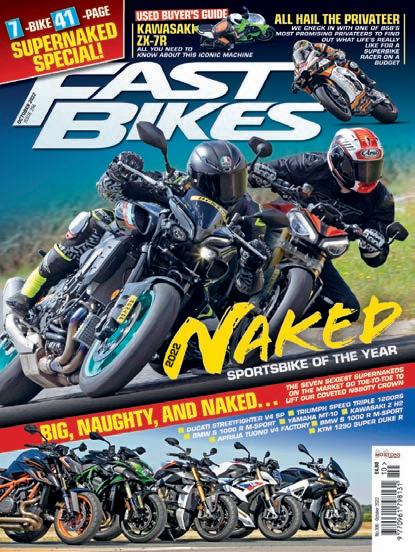

If you’re looking for gifts for your friends or family this Christmas, then look no further! A magazine is the perfect pressie for love d ones (or even yourself!), not only that... we’ll even send you this superb fr gift. If you enjoyed this issue, subscribe or renew for 12 ISSUE from just £47 and claim your free gift Visit www.classicmagazines.co.uk/ xmasfb or call 01507 529529 and quote XMASFB TERMS & CONDITIONS: Rates are based on UK orders only –for overseas please visit: www.classicmagazines.co.uk/fb-overseas Su bs cri pt io ns w ill s ta rt w ith t he i ss ue s el ec te d at t he b as ket. O ff er c lo ses 31/0 1/ 20 23. 12-i ss ue s ub script io n gif ts a re a vail able w hils t s to ck s l as t. F ull te rm s a nd c ondit io ns c an be f ound at w ww.c la ss ic magazine s.co.u k/ te rms An y gif ts a re f or UK o rd er s o nl y a nd w ill n ot be m aile d o ut u nt il D ec em ber 2 022. Get your gift subscription today










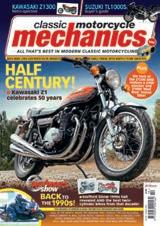






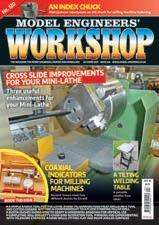



Celebrating the rich history of motorcycles and motorcycling, then and now. The Bible of the British-US car scene. If it’s American and got wheels, we’ve got it covered! The best rail news, features and images covering the UK’s preservation movement. Your guide to buying, running and owning a classic. Broad minded with a practical twist. Real-world tests of the latest bikes and kit, places to go and features not to miss. Enthusiast-led content, news, in-depth expert features and outstanding imagery. Real bikes. Real riders. Real rebuilds. Real Rides. RealClassic! The original and best mag for choppers, bobbers and all kinds of customs! Britain’s best magazine for those who love to grow their own fruit and veg. Running, riding and repairing Japanese, European and US classics from the 70s onward. News and features for the modern traction and heritage modern traction enthusiast. Classic, twinshock or Evo, it’s the place for you to dive into the dirty side of biking. The UK’s best rail title since 1897 – modern, steam and everything in between. The best classic and modern scooters. For enthusiasts, by enthusiasts. Recalling Britain’s steam era through photos, recollections and historical features. Visit www.classicmagazines.co.uk/xmasfb Or call 01507 529529 and quote xmasfb Try one of our other g reat titles too! Get 6 issues of one of these mags for just £20 TE RM S & C ONDI TI ONS: Rates are b as ed on UK o rder s onl y – f or o vers eas ple as e v isit: w ww.cla ssic magazine s.co.uk Subs cr ip tion s w ill s tart w it h t he i ss ue s ele ct ed at t he b as ket. O ff er clo se s 3 1/ 01/2 02 3. For those who like building model boats, or just enjoy soaking up this huge hobby. The tools and techniques used by model makers, light engineers and restorers. From steam locomotives to new developments in scale engineering. UK’s biggest model flying mag packed with reviews, features and expert opinion. The personalities, legendary bikes and the race track heroes who mattered then... and still matter now.
S1000 RR, M1000RR,

BMW’s given its inline-four superbike range a hefty tickle up for 2023, with more power, more tech and more sauce

Next year marks 15 years since the BMW S1000 RR superbike prototype was first announced. And the Munich massive has given its whole 999cc inline-four sports range a hefty makeover, with updates to the S1000 RR and M1000 RR, plus an all-new ultra-naked M1000 R.


First up is the new S1000 RR, the firm’s ‘standard’ superbike. There’s nothing standard about the performance though, with an extra dash of peak power, modified frame, and M1000 RR-style
bodywork, including aerodynamic winglets. These claim to provide up to 10kg of downforce at speed, improving braking and stability Plus, you won’t be shown up by be-winged Ducati and Aprilia riders down the bike meet any more.
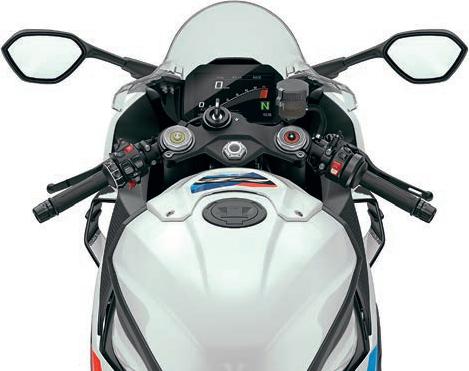

The extra peak power comes from a top-end overhaul, including an M1000 RR airbox design, shorter intake stacks, and revised intake ports. These have similar geometry to the M1000 RR head, but the port profiles are cast rather than machined Peak power is now 210hp@13,750rpm, up 3bhp compared
with 207bhp@13,500rpm on the old bike Peak torque is unchanged though at 83.3ft lb@11,000rpm –the extra power just comes from holding onto the torque a bit higher up the rev range. That power now has to shove along a kerb weight of 197kg, which drops to 193.5kg with the M Package and its carbon wheels.
Away from the engine, there’s a new main frame, with special flexing cut-outs designed into the spars and tweaked steering geometry. The press release claims the steering head angle has been flattened out by 0.5° (66.4° instead
of the previous 66.9°) and the fork offset reduced by 3mm, increasing the caster from 93.9mm to 99.8mm. The wheelbase has also been extended to 1457mm.
According to chassis engineer Sebastian Epp, all that means better rider feedback, steering precision, and accuracy sounds good to us.
On the electronics, you get a new Brake Slide Assist function and BMW’s also fitted the M Package lithium battery and USB charging port in the tail. The lush colour LCD dashboard has new display modes and there’s now a clearer rev counter read-out.
PL ANET FAST BIKES – NE W METAL, NEWS & REVIE WS
2023 BMW
M1000 R
10 DECEMBER 2022 WWW.FASTBIKESMAG.COM
Keep an eye on our online channels – Facebook, Twitter, and the Fast Bikes website (www.fastbikesmag. com) – for news as it happens.
M1000 RR
S1000 RR – £17,150
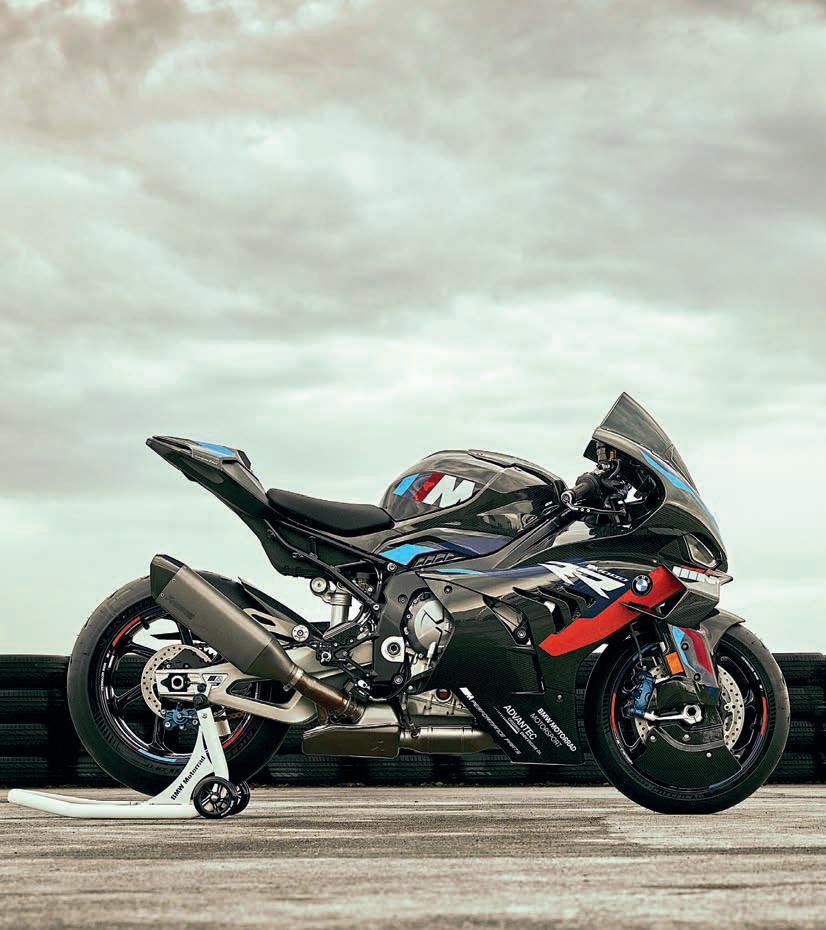
More power and torque: 210 hp@13,750rpm and 84ft lb@11,000rpm
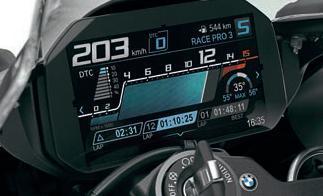
Shorter final drive ratio
Advanced ‘Flex Frame’ with more flex
Chassis geometry with new values for steering head angle, offset, caster, and wheelbase
M Chassis Kit as standard with adjustable swinging arm pivot point and raised rear end Dynamic Traction Control (DTC) with new Slide Control function for drifts while accelerating using steering angle sensor ABS Pro with new Brake Slide Assist function using steering angle sensor for braking drifts when approaching corners
ABS Pro setting ‘Slick’
Optimised aerodynamics with new front section, winglets, high windshield and partioning of the lower triple clamp.
M lightweight battery as standard USB charging port in the rear section
Redesigned rear section and shorter number plate holder with optimised wiring harness
Easier rear wheel removal with fixed spacers, chamfered brake pads and brake anchor plate
M1000 RR –£30,940

Optimised aerodynamics with more downforce even at lean angles, while increasing the top speed from 306 to 314km/h
Carbon fibre fairing, carbon fibre fairing bracket, and new carbon fibre M winglets
Carbon fibre front mudguard with integrated brake ducts
M Aero Wheel Covers in carbon fibre.
M Carbon wheels with new surface and M Design Tapes
Forged wheels option New rear section
Ergonomic M Endurance seat
Short number plate holder and modified wiring harness with LWS connector
BMW’s racing homologation special is largely unchanged in terms of engine and chassis tech. It’s essentially there as a base for race teams of course, so the two-ring race pistons, Pankl titanium rods and fully adjustable chassis all remain, as does the claimed peak power of 212bhp@14,500rpm. Wet weight stays at 192kg. The big changes come in the bodywork and aerodynamics front

There’s a new carbon fibre fairing design that claims to cut drag and also increases the M1000 RR’s maximum speed from 190mph to 195mph. The taller screen also gives more wind protection to

the rider, and a new carbon fibre fairing support is lighter and more rigid. Meanwhile, that mental new winglet design gives much more downforce than on the previous bike; at 186mph (300kph), there’s an extra 6.3kg of downforce, up to 22.6kg from 16.3kg. The aerodynamic overhaul continues with new carbon fibre brake cooling ducts, a new front mudguard design, and carbon aero front wheel covers, all of which reduce drag and add much sauce in terms of sweet design. If you like the look of Ducati’s wild MotoGP bikes and its F1-style aero devices, then you’re going to love this radical new M1000 RR…

DECEMBER 2022 WWW.FASTBIKESMAG.COM 11
M1000 R
The final piece of nonsense out of BMW for 2023 is this, the new M1000 R ultra-naked The firm’s dubbed it the ‘M R’ or ‘M Roadster’, a moniker first seen in 1997 on a wild little sports version of the BMW Z3 sports car. That M Roadster had a 3.2-litre 316bhp inline-six engine, and the new two-wheeled Roadster makes two-thirds of that power with just a third of the capacity: 210bhp from 999cc. That’s also 45bhp more than the stock S1000 R – a

gaping power differential for BMW’s two inline-four naked machines.
The extra power comes from a new ShiftCam engine, which has the exact same peak output as the S1000 RR – 210bhp@13,750rpm, and a 14,600rpm redline. Add in a 199kg kerb weight, and you have supernaked performance to more than match the Ducati Streetfighter V4S and Aprilia Tuono RSV4 1100, with 10% lower capacity.
After the power output, the next craziest thing is the M Roadster’s bodywork It’s festooned with radical aerodynamic winglets, extending out from the radiator side covers Combined with the minimalist headlamp surround and skinny tail unit, they give a super-tough hardcore style – and adds 11kg of downforce to the front end at 135mph.
Much of the rest of the M1000 R package echoes the new S1000 RR: the frame, DDC semi-active electronic suspension, electronic rider aids and the blue ‘M’ brakes are all pretty much identical, with a set of upright wide handlebars

M1000 R –£19,480
M RR shift cam engine, 210hp @ 13,750rpm
Shorter final drive ratio (47 teeth instead of 45)
Shorter gear ratios in fourth, fifth and sixth gear
Optimised intake system with variable intake funnels
Titanium rear silencer
M Endurance chain
Riding modes ‘Rain’, ‘Road’, ‘Dynamic’, ‘Race’ and ‘Race Pro1-3’, as well as the latest generation of Dynamic Traction Control DTC and DTC wheelie function with six-axis IMU Brake Slide Assist assists the rider when brake drifting.
Shift Assistant Pro, reversible for track use
Launch control, pit lane limiter, hill start control pro
M winglets and wind deflectors: more high-speed stability thanks to aerodynamic downforce Engine spoiler
Upside-down fork in ‘All Black’ design with adjustable spring base in conjunction with standard DDC M brake system
Aluminium forged wheels or M Carbon wheels

M handbrake and clutch lever
Adjustable steering damper
Milled-over handlebar clamp
Wider handlebars with laseretched ‘BMW M 1000 R’ lettering Main headlamp


Small number plate holder
Instrument cluster with large 6.5in colour LCD, start-up animation with OBD interface for M GPS Datalogger and M GPS Laptrigger (used via activation code)
Lightweight M battery, rear USB charging socket, LED lights, cruise control and heated grips
replacing the clip-ons. There’s a titanium end can, BMW’s DLC-coated ‘Endurance’ final drive chain, lightweight lithium battery and optional carbon fibre M Package wheels.
100 Y EARS OF BMW MOTORC YCLES BY ALAN DOWDS
2023 marks a century since BMW’s first motorbike – and our man Dowds has been beavering away writing this book to mark the firm’s centenary. From that first BMW bike – the R32 shaft-drive Boxer (of course!) – to today’s

M1000 RR and R1250 GS, it’s all in here, together with the tech behind the bikes, and how the company survived wars, depression and competition from Japan.
It’s rammed with sweet pics from the BMW archives in Munich, and
there’s even a wobbly Dowds Beemer-wheelie in there too. It’s a weighty tome, with 240 pages in massive coffee table format, and is available at Waterstones, WH Smith, Amazon and most other good bookshops, RRP £45. The perfect Christmas gift!
PL ANET FAST BIKES – NE W METAL, NEWS & REVIEWS
12 DECEMBER 2022 WWW.FASTBIKESMAG.COM
Keep an eye on our online channels – Facebook, Twitter, and the Fast Bikes website (www.fastbikesmag.com) – for news as it happens.
2023 HONDA CB750 HORNET Honda’s bringing back the buzz
It’s 25 years since the CB600F Hornet was launched in the UK. And now Honda’s brought the moniker back, this time on a 750 twin rather than the old 599cc inline-four lump Launched at the Intermot show in Cologne, the new CB750 Hornet has an all-new 755cc parallel twin engine, with a 270° firing order and SOHC Unicam head, in a basic steel
frame and road-friendly running gear. The firm claims 90bhp peak power, with a grunty delivery and a skinny 190kg wet weight. Those numbers put it ahead of the rest of the class – Yamaha’s MT-07, the Kawasaki Z650 and Suzuki’s SV650 – on power/weight ratio, and it’s also priced well, at just £6999 new. You get a decent rider aids package for that cash: traction, wheelie and
engine brake control, plus ABS and engine power modes, all integrated into four riding modes (rain, sport, standard and a customisable user mode). The settings are controlled via a plush new 5in full colour TFT LCD dashboard with Bluetooth phone link and USB-C charging port, and there’s also an optional up/ down quickshifter. The suspension is fairly basic: non-adjustable 41mm
Showa USD Big Piston forks, with compression and rebound damping functions in separate legs, and a preload-adjust rear monoshock. Tyre sizes are also a bit meh, with a 160/60 17 rear rather than the beefy 180-section hoop on the original 600 Hornet.
None of that will matter to most owners, though. A sub-£7000 Honda middleweight roadster will be more popular than a Liz Truss voodoo doll this Christmas, and the chassis will no doubt be set up nicely for the road Where it will matter is on the track, so Honda will need to buy a catering pack of K-Tech goodies for when it launches the inevitable one-make race series – just like the original Hornet 600 cup back in 1999. Come on Honda UK – you know it makes sense…
DUCATI MULTISTRADA V4 RALLY

There’s been a hardcore hole in Ducati’s line-up ever since it replaced the 1260 V-twin Multistrada range with the new V4 variants. The old Multistrada Enduro offered serious adventure touring capability, with its dual-sided swingarm, long-travel suspension, wire spoked rims and 30-litre fuel tank. But now there’s a new V4 nutter, the Multistrada V4 Rally, which completes the mighty four-cylinder adventure range Like the Enduro, the Rally has a stronger dual-sided swingarm, the big 30-litre tank, longer suspension travel and tubeless wire-spoked
wheels, including a 19in front rim But it’s added a heap of smart technology and design to make it more usable for long-distance work.
The engine can now de-activate the two rear cylinders when cruising to reduce fuel consumption and heat generation (they only cut off at idle on the current V4s). The engine has a massive 60,000km between valve servicing and a 15,000km/24-month oil change interval. And Ducati’s given the rider and pillion more space, with a new rear subframe sitting the passenger further back and spacing out the luggage mounts.
Ducati’s Skyhook semi-active suspension is present and correct,

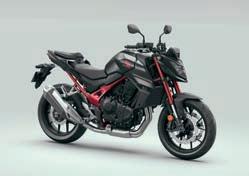


and has a couple of handy new features to help the shorter of leg You can set the smart preload function so the bike automatically sinks down at a standstill, and the suspension can also firm up the damping at turn-on, which makes it easier to lift the bike off the sidestand.
The 1158cc Granturismo V4 engine still makes a healthy 170bhp, though you’ll need it, with the new Rally weighing in at 260kg wet. There is, of course, a NASA-spec electronics set-up, with colour dash, all the rider aids, radar cruise control, semi-active suspension, quickshifter, LED
cornering lights and much, much (much) more. That’s as it should be, admittedly, with the RRP starting at £23,590, rising to £27,140 for the Full Adventure version, which includes aluminium luggage, heated grips and seat, Akra can and carbon bolt-ons.

2023
DECEMBER 2022 WWW.FASTBIKESMAG.COM 13
KTM






890 ADVENTURE R
KTM’s middleweight 890 Adventure R is a cracker, with a beefy 105bhp parallel twin motor, capable off-road chassis and sharp styling It’s been overhauled for 2023 with all-new styling, fresh rally-style bodywork, and uprated chassis and electronics kit.

The aggressive new style is inspired by the KTM 450 Rally racebike, with tough upright bodywork, massive beaky



mudguard and a chunky alloy sump guard. WP XPLOR forks and rear shock are updated with revised damping, and there are also more off-road-biased Mitas tyres.
On the electronics front, the dash is now a full colour unit rather than the old monochrome tech, which will be a massive help when you’re stuck in 50ft sand dunes in the Gobi desert, no doubt







What’s not so good is a new ‘demo’ feature sneaked into the electronics: for the first 1500km all the optional software features are turned on so you can try them... then they all turn off until you pay the dealer to activate them for good. We can see the arguments and this is apparently common in the car world. But it definitely feels a bit ‘off’ and no one on social media seems to be a fan.


















SUZUKI RACE PARTS PROGRAMME
Got an ACU licence? Got a Suzuki? Got a smashed or blown-up Suzuki? Then this is for you.




Suzuki GB has resurrected its race parts programme, which lets bona fide racers (or at least anyone bona fide who knows someone with an ACU licence) buy parts for a wide range of track-friendly Suzukis at a discount. Reductions are available on any Suzuki used
in competition, including GSX-R1000/750/600/125 supersports bikes, as well as SV650s and Bandit 600s, plus all the four-stroke RM-Z and two-stroke RM motocross machines. You get a 15% discount on all orders over £150 and it covers everything




from wheels, handlebars and other chassis components to pistons, rings and other engine hardware.








To take advantage of the discount, just show your valid ACU licence at the point of purchase through your nearest Suzuki dealership.







PL ANET FAST BIKES – NE W METAL, NEWS & REVIEWS
14 DECEMBER 2022 WWW.FASTBIKESMAG.COM











































































































COOLEST & TRICK EST PERFORMANCE PRODUCTS
Heated grips are one way to keep your pinkies toasty when the mercury plummets – but here’s another British heated clothing maker KEIS has a wide range of natty winter gloves with built-in heating elements, like these short-cuff designs. They can wire into your bike or

run off an (optional) lithium battery pack in your jacket pocket, and they keep the backs of your hands and fingers warm – something grips can’t do. There’s a simple three-level heat control button on the back, and they have a textile outer shell with bonded Hipora breathable waterproof membrane and Thinsulate thermal lining. They’re EU approved as PPE protective kit, too.
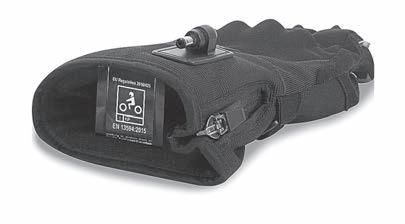
Gilles makes some lush bolt-on parts, and these replacement chain adjusters are properly lovely. They have the usual high-quality fit and premium anodised finish, with a precise adjusting bolt for the chain tension. But they also add a quick-change function to the rear wheel, holding the brake caliper mount plate and wheel bushing in place when you take the wheel out. There’s an internal guide rail to help refit the wheel, too Clever stuff and a decent price.
R&G is well-known for its crash protectors but it also makes some sweet rearsets, including these ones for the 2017-on Yamaha YZF-R6. They are fully adjustable, with 12 positions, allowing the perfect set-up for road or track, and can run with a normal or race shift pattern. They are finished in black anodising with white R&G logos, and the footpegs are knurled for great grip in wet or dry conditions. You can also buy pegs and pedal tips as separate spares too; handy for the crashers among us…

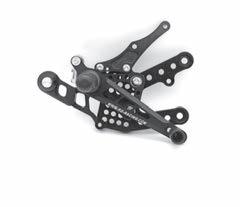
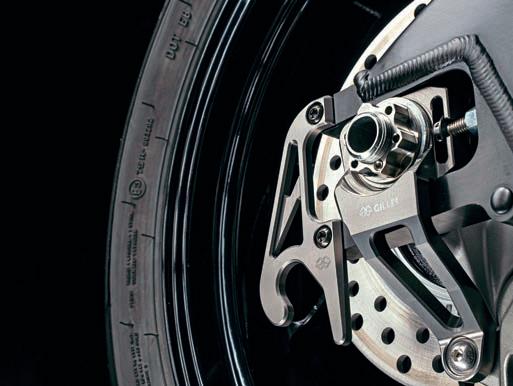
Commuting all through this winter? Well done – treat yourself to a fresh set of toasty textiles
Check out this Furygan Voyager jacket: three-layer laminated textile outer shell with waterproof breathable membrane and thermal liner will keep the weather out.
Then when spring comes, you can whip out the liner and open the plentiful vents for a cool
ride. There’s British-designed D3O armour in the elbows and shoulders, and pockets for back and chest protector panels too.
Matching trousers have the same laminated shell construction and removable liner/vents, with D3O knee and hip armour and a removable bib/brace section.
It is available in this grey/blue scheme, as well as a more adventure-y khaki colour.

ALL THE L AT EST,
£190 w ww.keisapparel.com Jacket £369.99; trousers £289.99 w ww.furygan.com £389.99 www.rg-racing.com £269 w ww.performanceparts-ltd.com R&G YAMAHA R6 REARSE TS GILLES CHAIN ADJUSTERS /QUICK CHANGE FITTINGS FOR CBR1000RR FIREBL ADE FURY GAN VOYAGER 3C SUIT KEIS G701 HE ATED GLOVES 16 DECEMBER 2022 WWW.FASTBIKESMAG.COM
A brand-new product from helmet maker LS2 – slick injection-moulded MX goggles





The Aura goggles have polycarbonate lenses and a close-cell foam venting surround, plus a nose guard and 50mm silicone-gripper strap. The Aura also features a unique new Pinlock system for premium anti-fog performance, and there are laminated tear-offs in the box, too Available in six colours now.
Putting the bike away for winter? You slacker! But even slackers deserve top security, so you should make sure your bike is secure in its snug garage over the cold months. This Oxford Products ground anchor is made from hardened steel and is Sold Secure Gold approved It fits with four high-security anti-tamper fixings into solid concrete or brick floors or walls, and takes all Oxford chains (except the firm’s ‘ship’s anchor-spec’ BEAST 22mm). Well worth fitting as an extra layer of security, and a good price too.
A new airbag-ready one-piece suit from Alpinestars, the GP Force Chaser is mid-priced with a solid spec. It’s ready to take the firm’s Tech-Air 5 airbag but is also optimised for use without the airbag system. The suit features a cowhide outer construction with stretch panels at calves, armpits, crotch and abdomen for better comfort and fit, as well as armour panels on elbows, shoulder, knee and tibia. The protection continues with Nucleon Bio-Flex hip protectors and external slider fitments at the joints, plus pockets for back protector and chest protectors if you’re not using the Tech-Air 5 set-up. Available in white/black, black/red and black/ fluoro, and also as a two-piece suit.
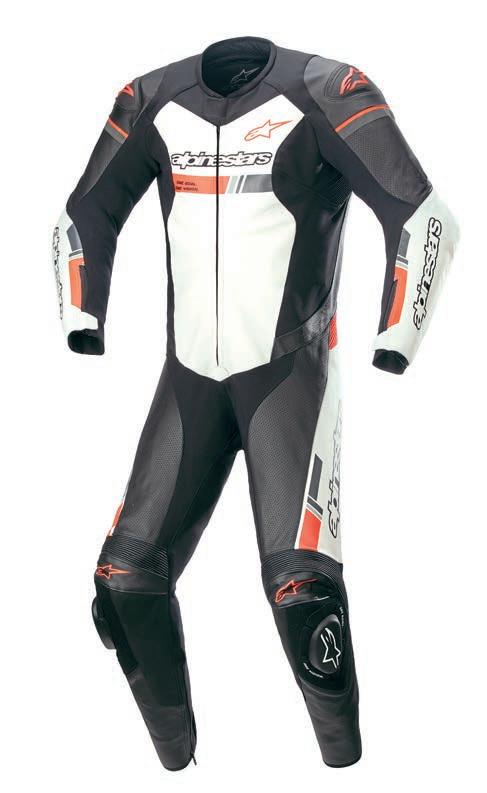
Best known for its engine crash protectors, British firm GB Racing has teamed up with another UK outfit, Pro-Bolt, to produce a new range of super-light titanium bolt sets to match its cover kits. This set for the Yamaha R1 includes all 39 bolts needed for the engine cases, in polished titanium hex head with lockwire drillings It’s not cheap but as anyone with a titanium obsession knows, lightness costs…

We love the new DesertX retro-rally machine, but it’s not cheap; if you have one, you’ll want to look after it British firm Evotech sells a load of protective kit for the new Ducati, including these guards for the radiator and front cylinder head. They keep the worst of the stones, grit, debris and spray from the front wheel away from the engine and rad,

and look pretty natty too Made from black powder-coated aluminium, they are light, tough, and easy to fit.
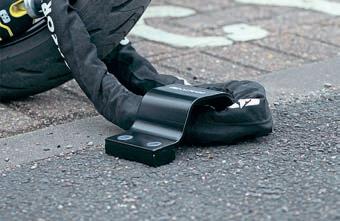
£849 w ww.alpinestars.com £322.73 www.gbracing.eu £74.99 w ww.ls2helmets.com £59.99 w ww.oxfordproducts.com £64.99 (rad guard); £79 (engine guard) www.evotech-performance.com PRODUCTS GB RACING TITANIUM BOLT SETS OXFORD STRIK EFORCE GROUND ANCHOR ALPINESTARS GP FORCE CHASER SUIT EV OT ECH ENGINE AND RADIATOR PROTECTORS FOR DUCATI DESERTX LS2 AURA MX GOGGLES DECEMBER 2022 WWW.FASTBIKESMAG.COM 17

FEATURE

KTM 1290 SUPERDUKE RR KTM 1290 SUPER DUKE RR WO RD S: J OH NN Y M AC PI CS : C HI PP Y W OOD ( RO AD ) / T IM K EE TO N ( TR ACK) BEAUTIFUL DECEMBER 2022 WWW.FASTBIKESMAG.COM 19

FEATURE
IF YOU WANT A SUPER DUKE RR IN YOUR GARAGE, YOU’VE BASICALLY GOT TO WAIT FOR SOMEONE TO GIVE THEIRS UP.
20 DECEMBER 2022 WWW.FASTBIKESMAG.COM










































































































































































































































